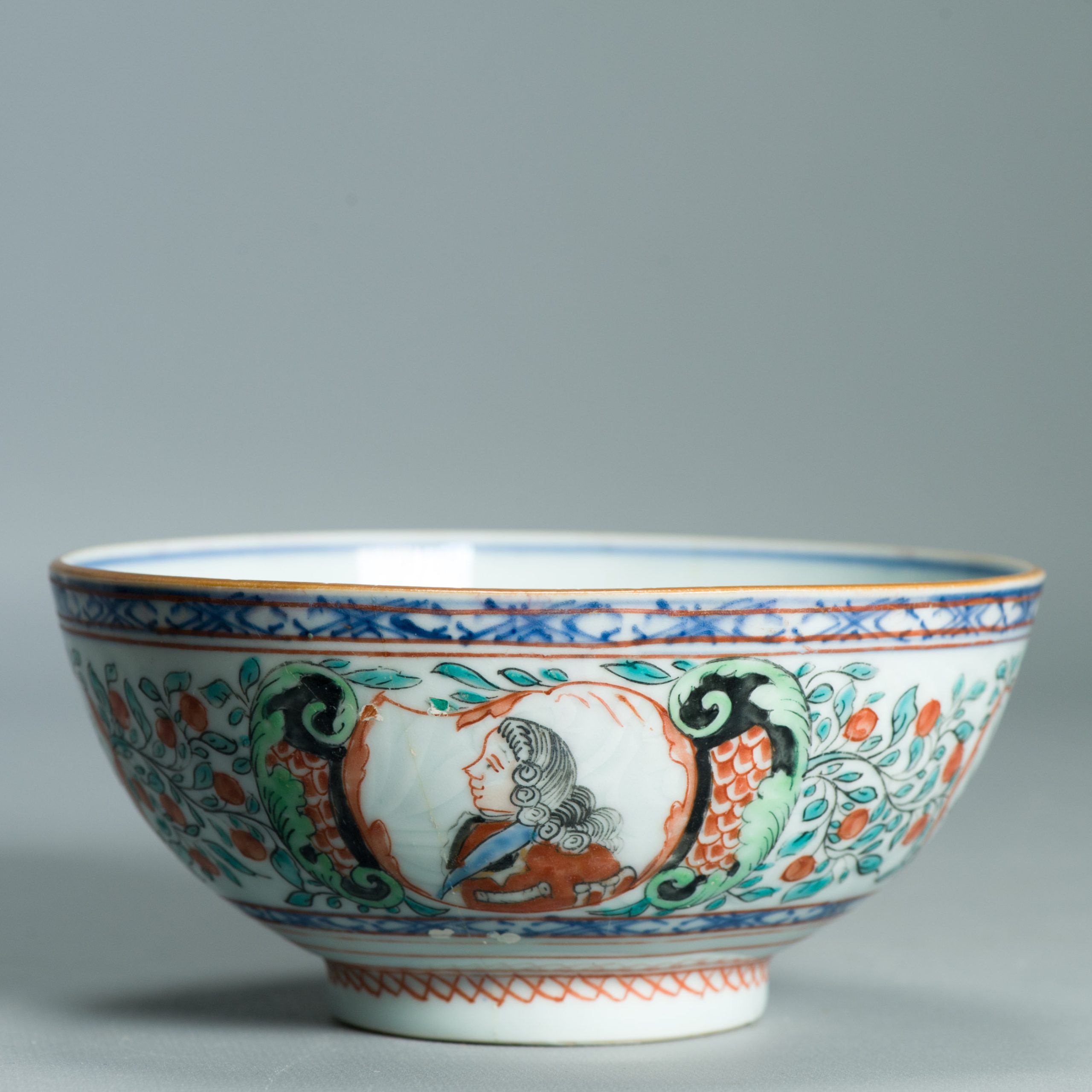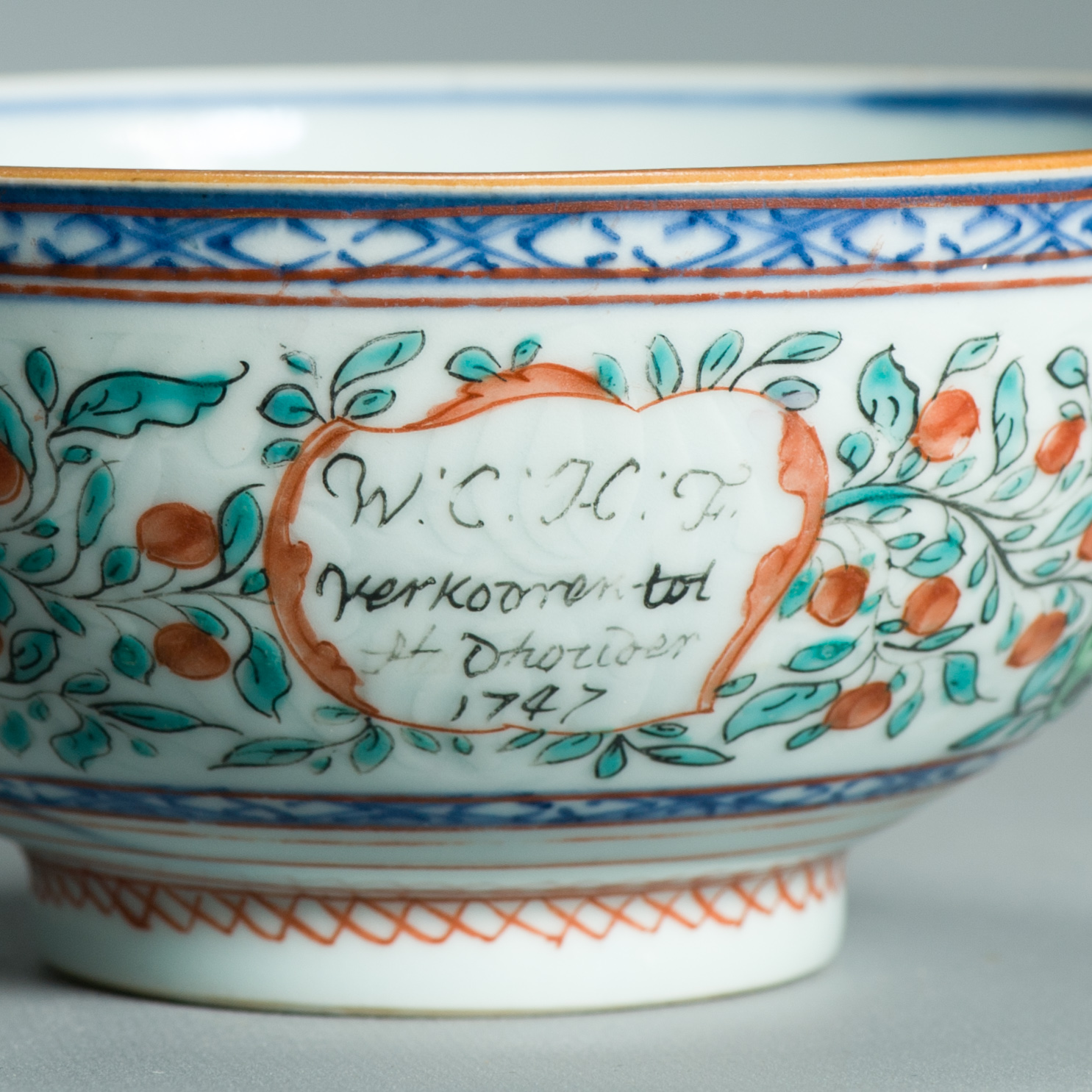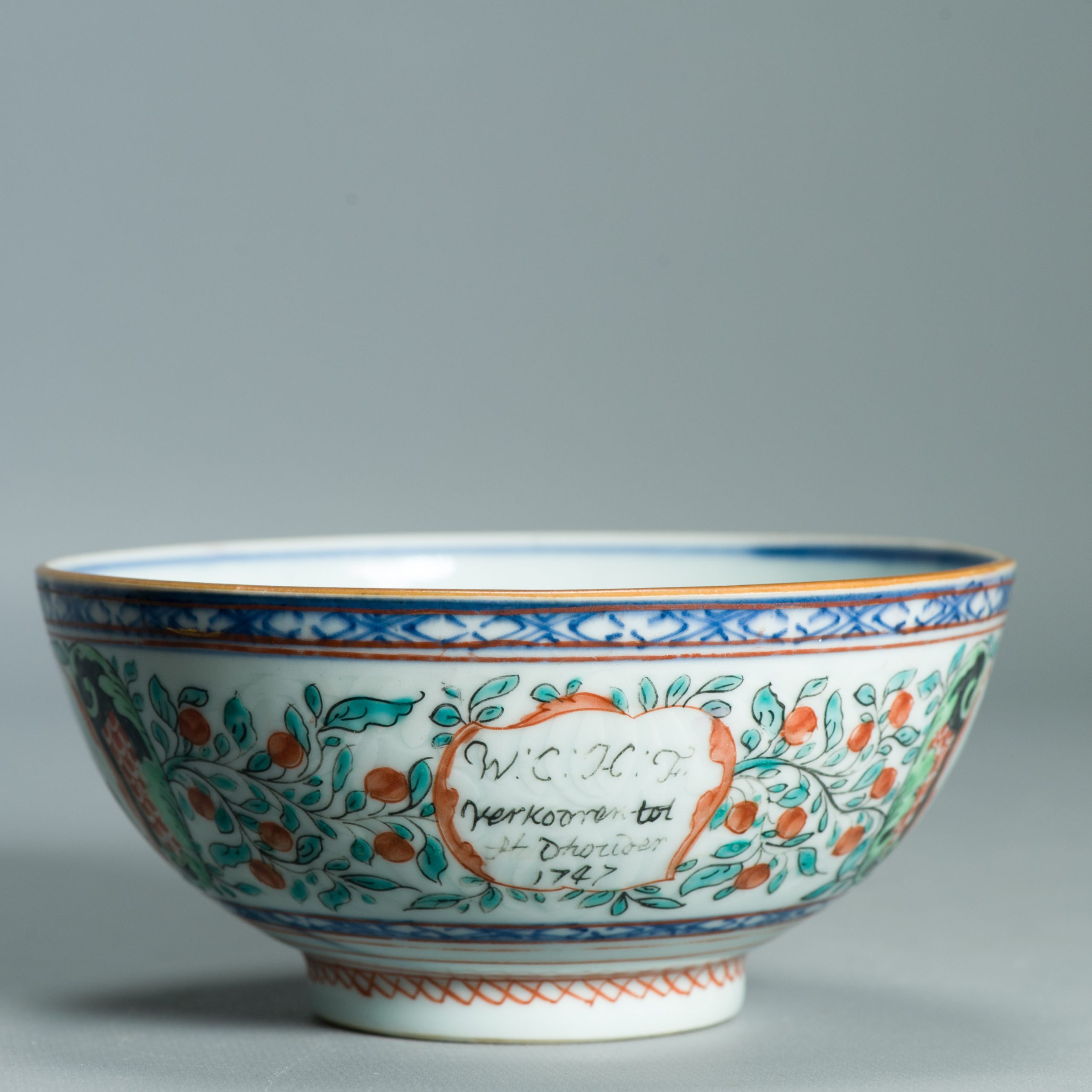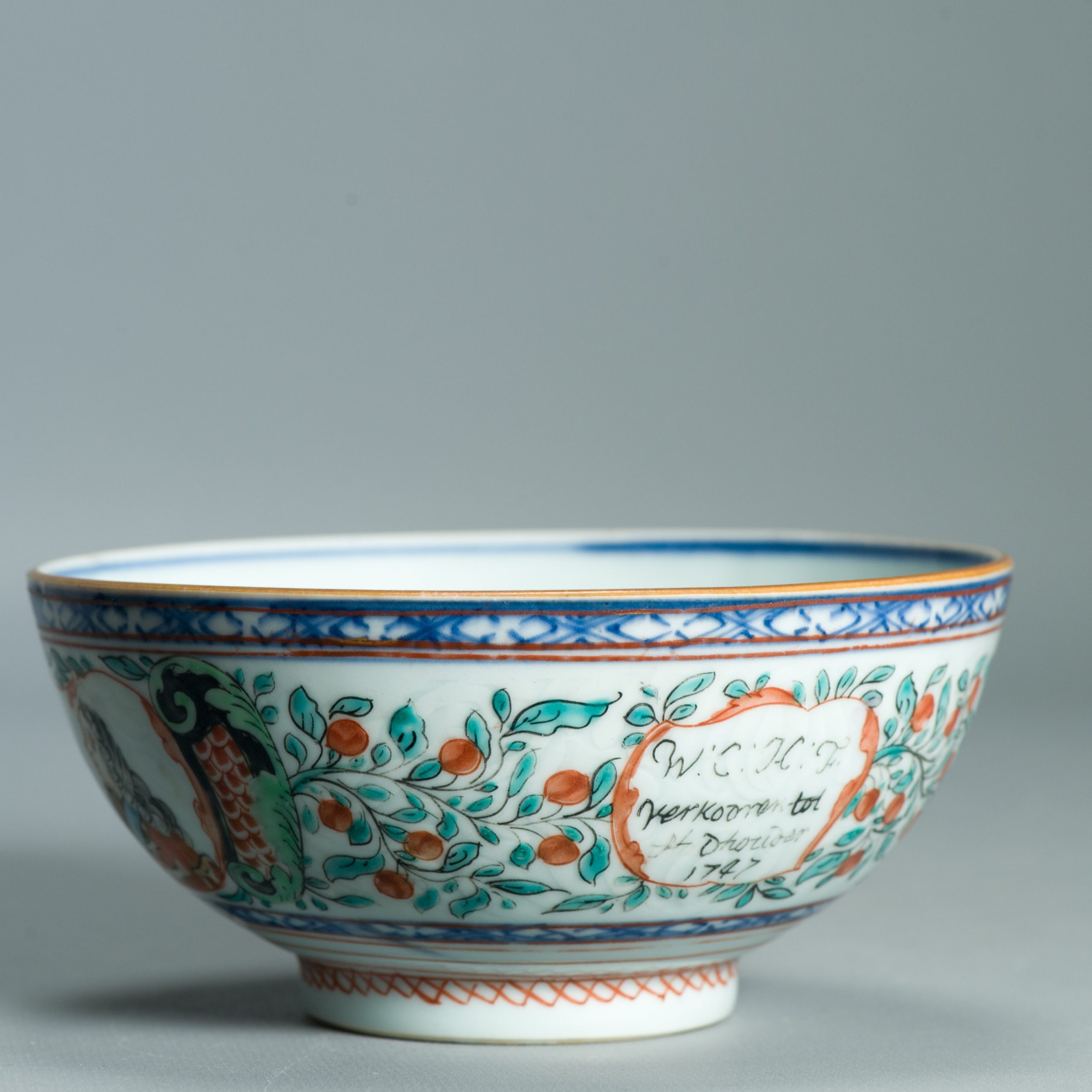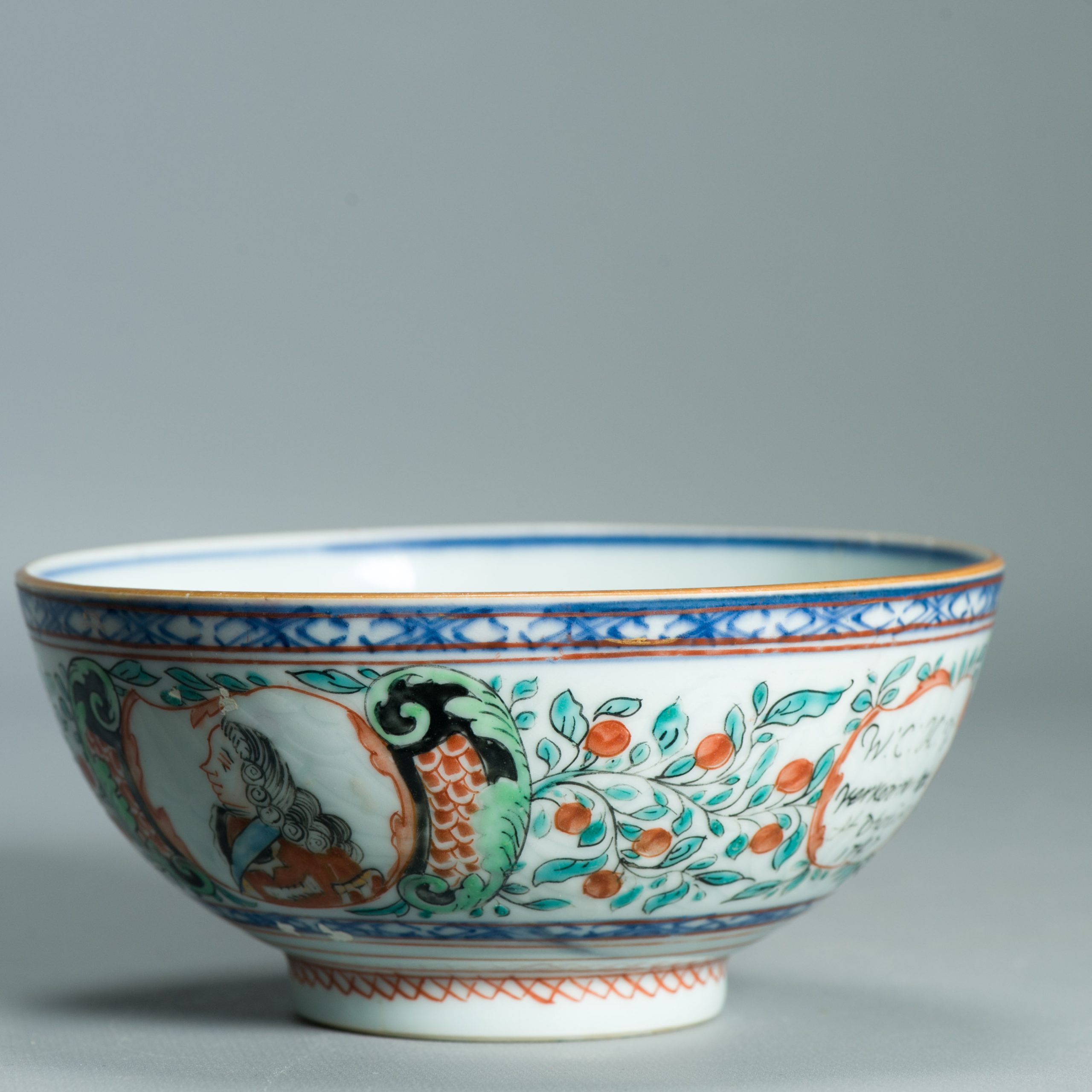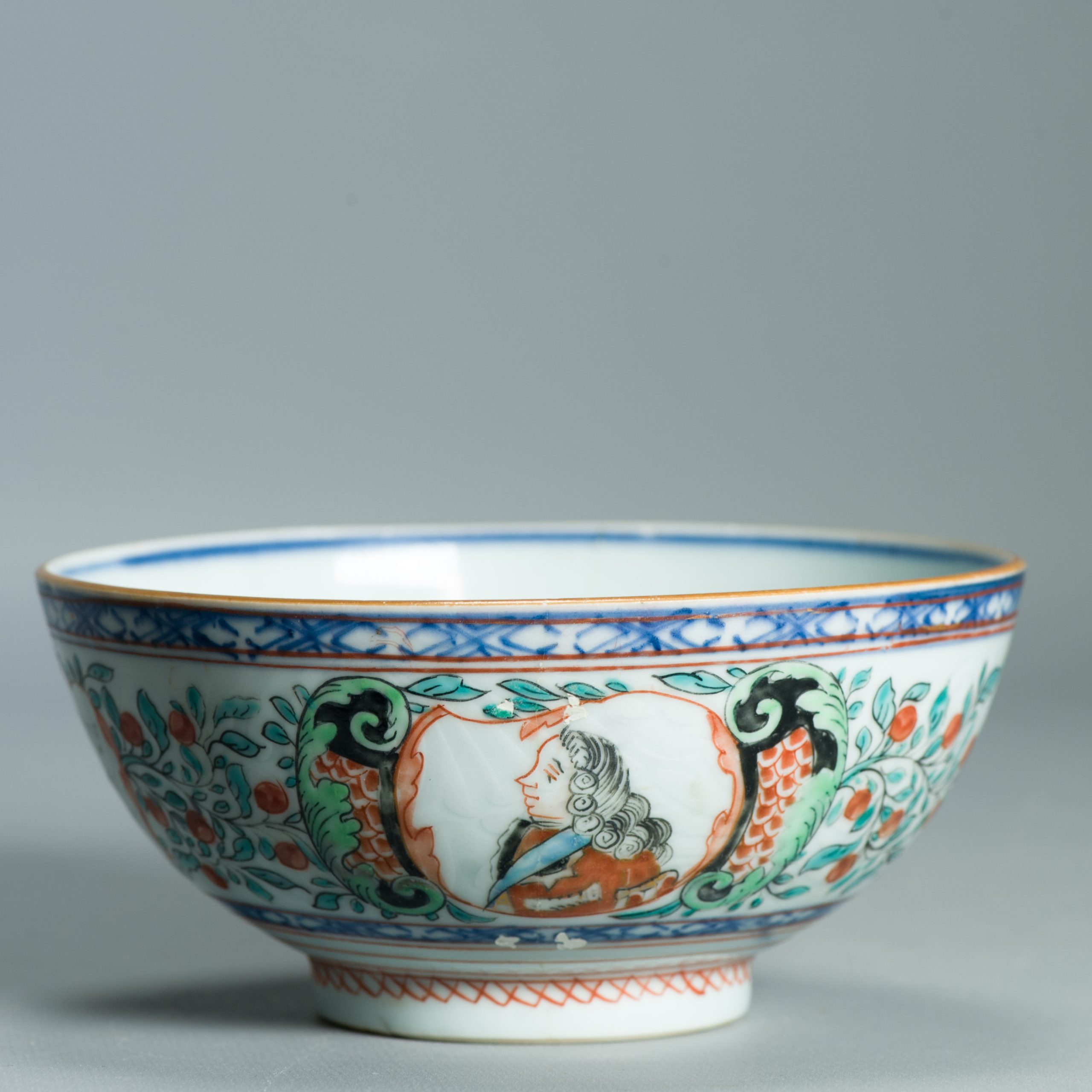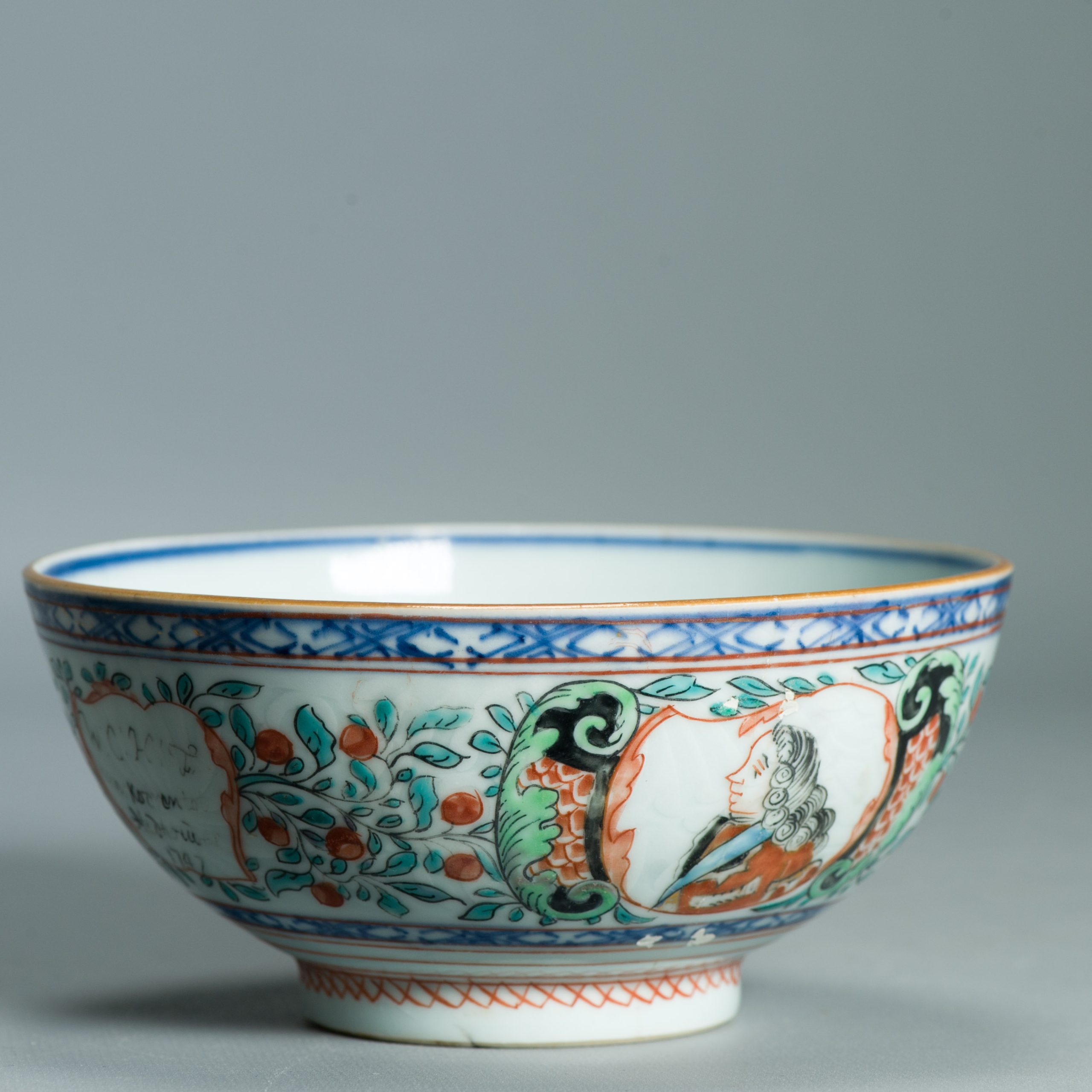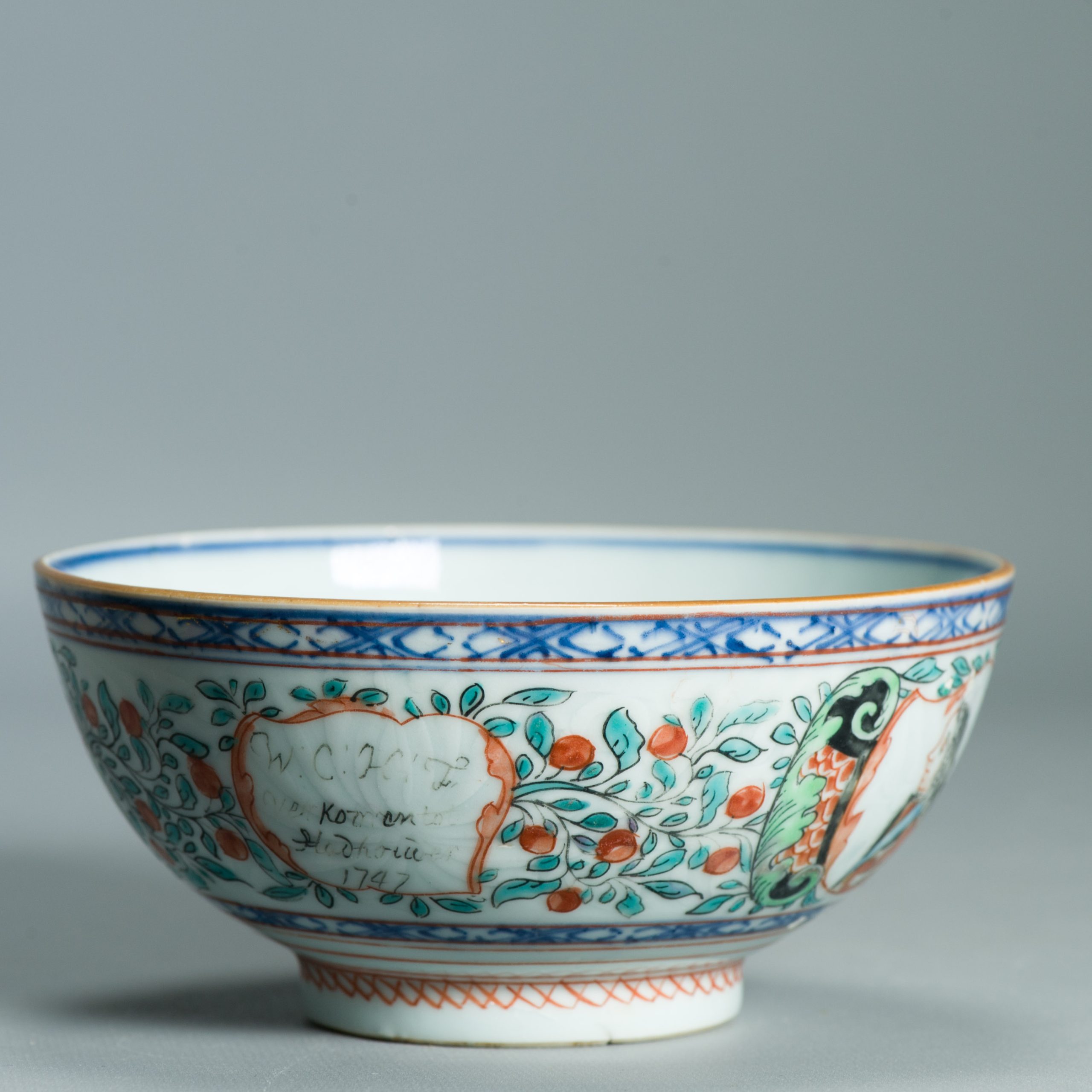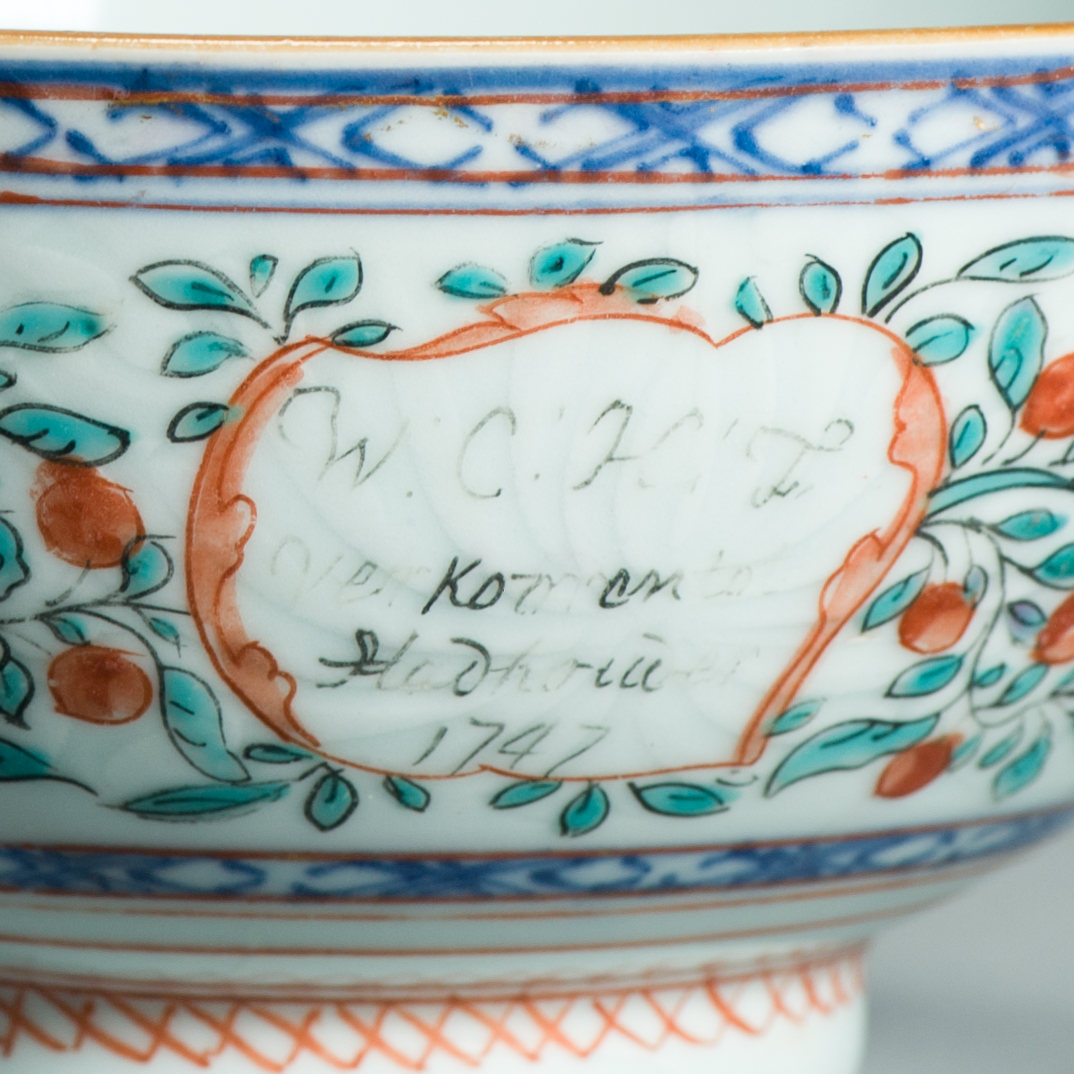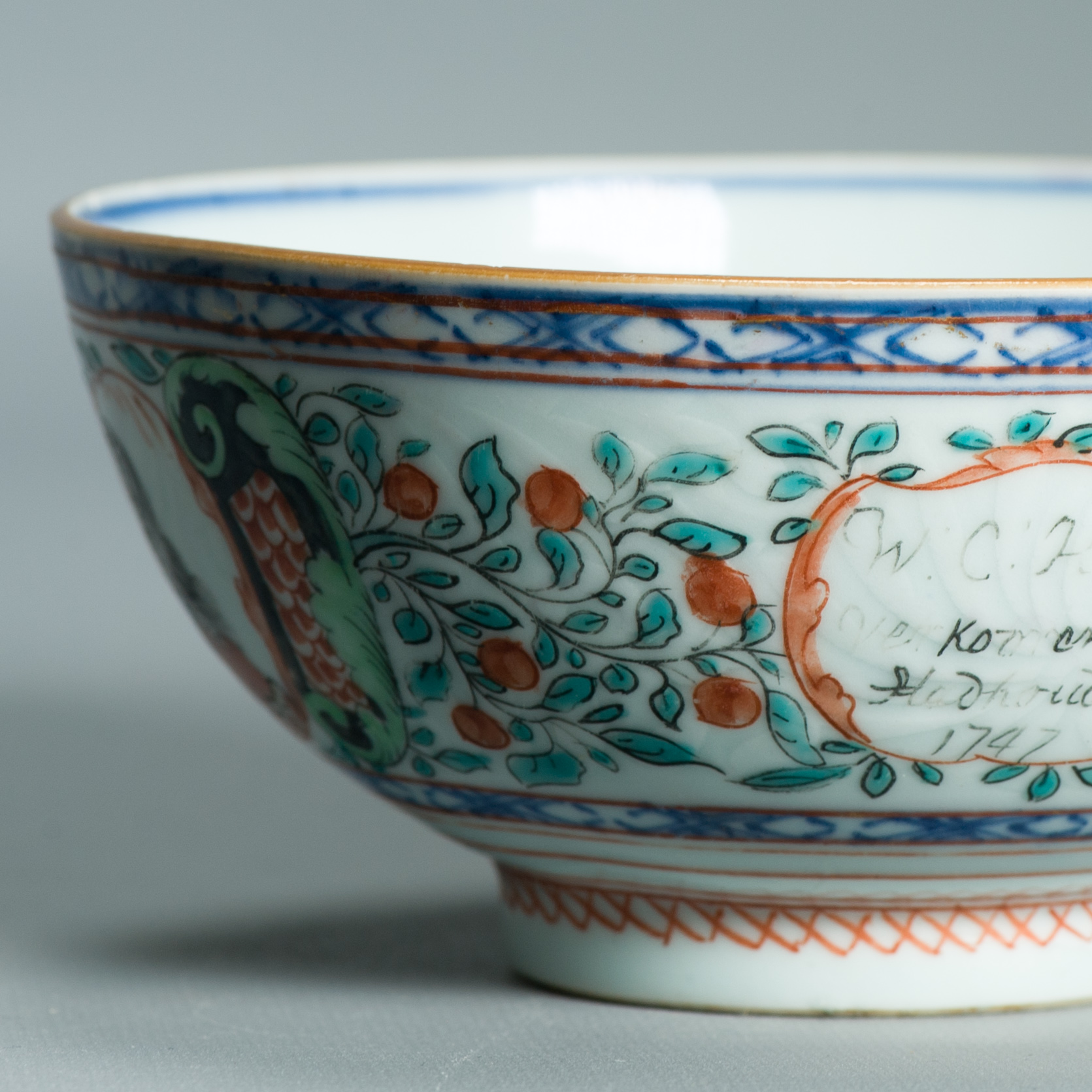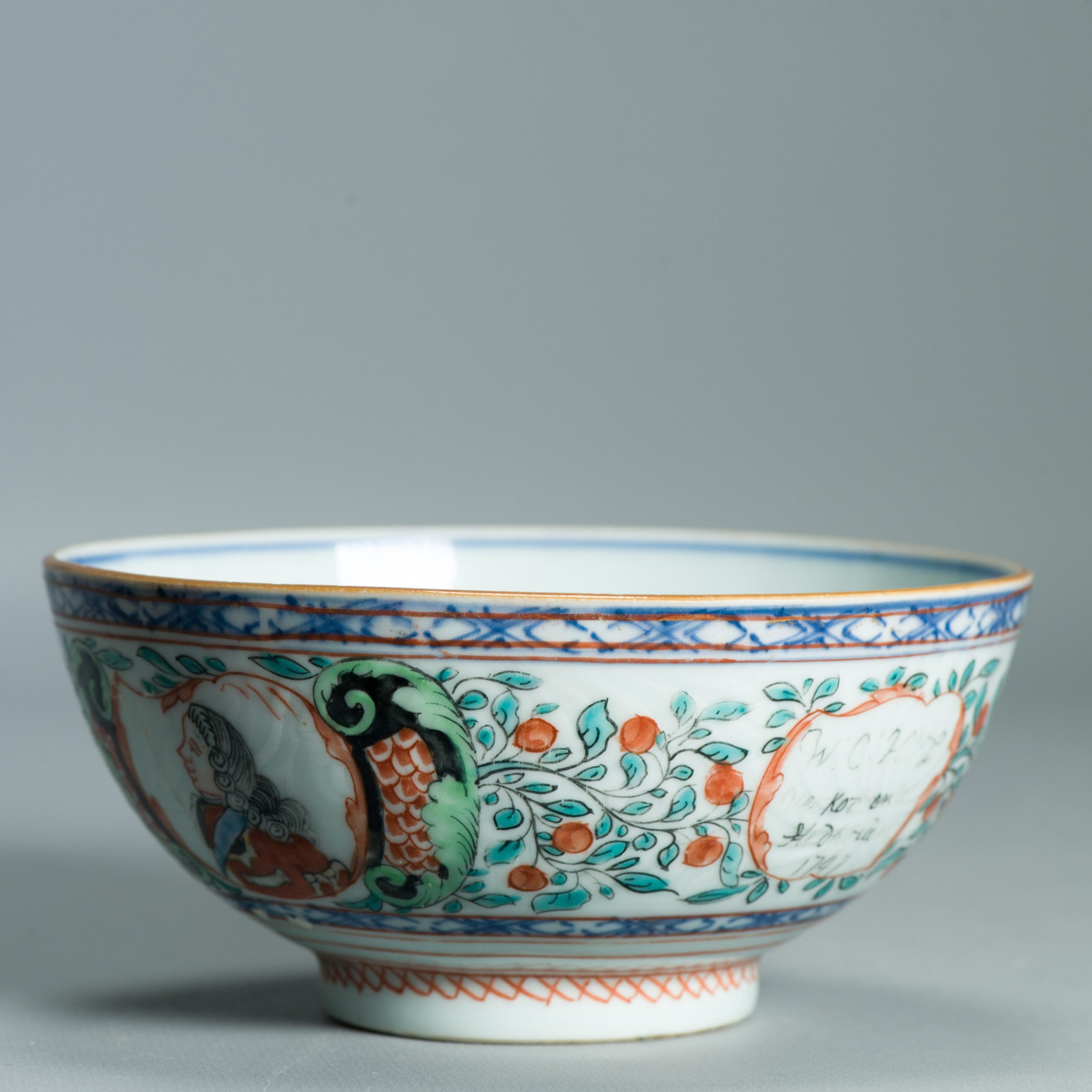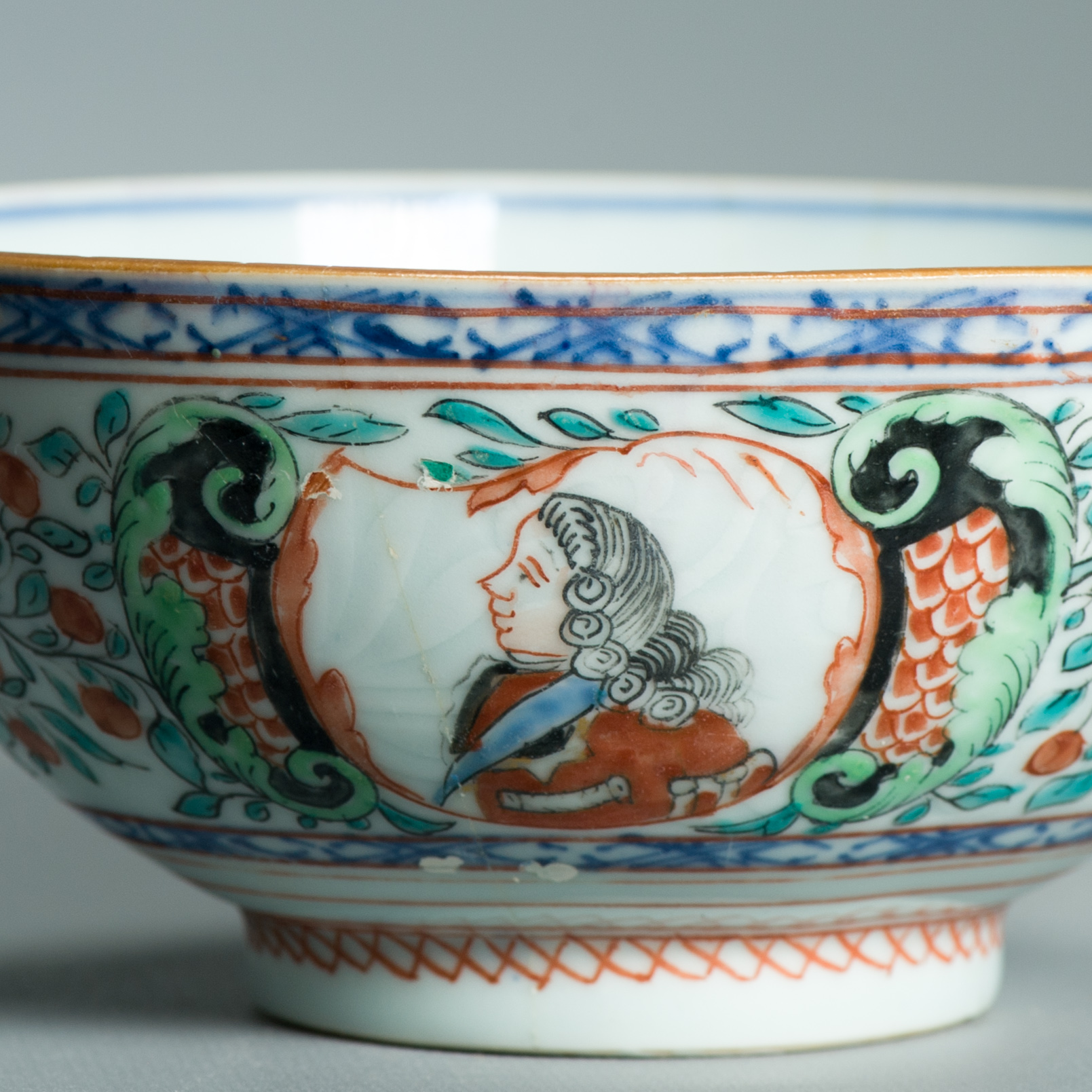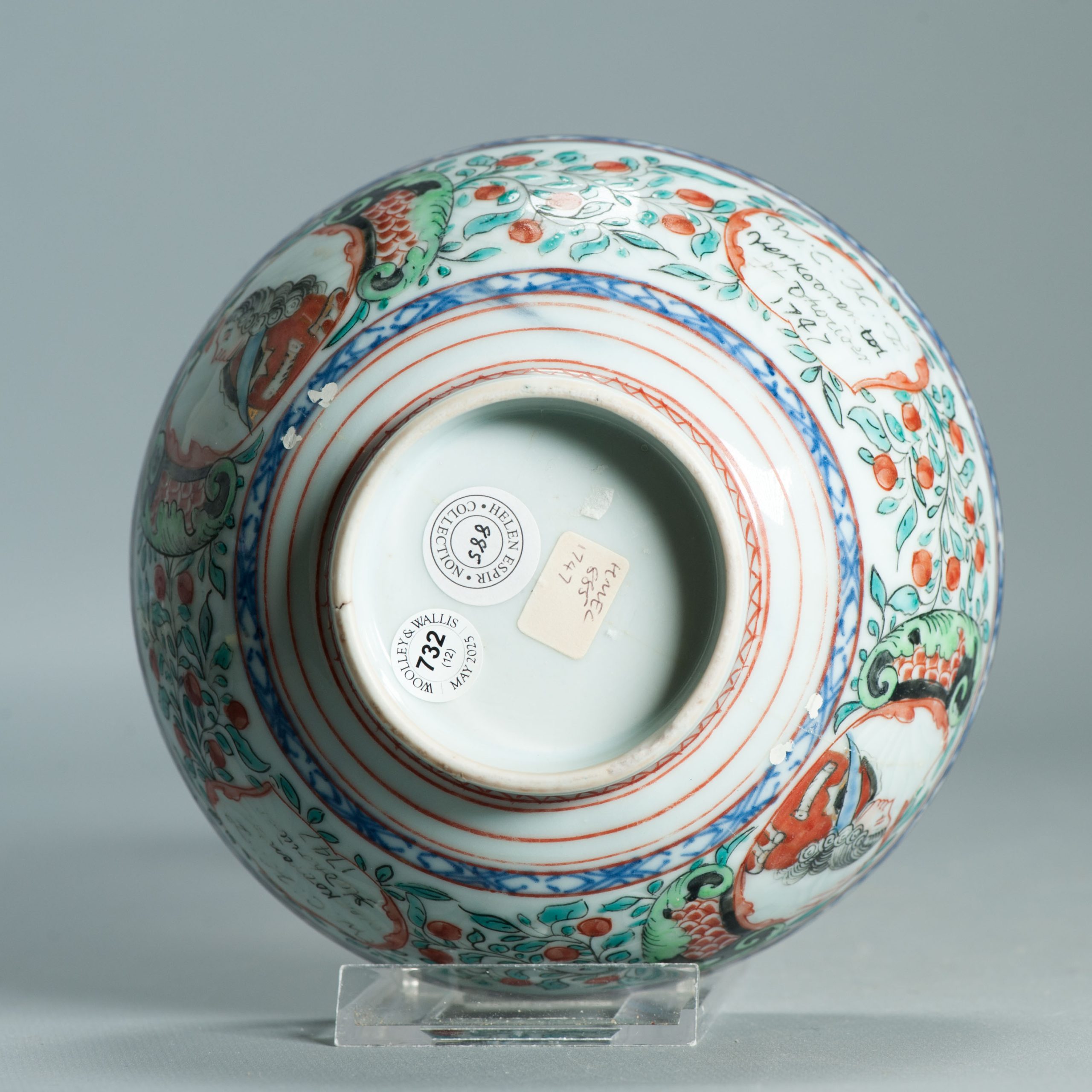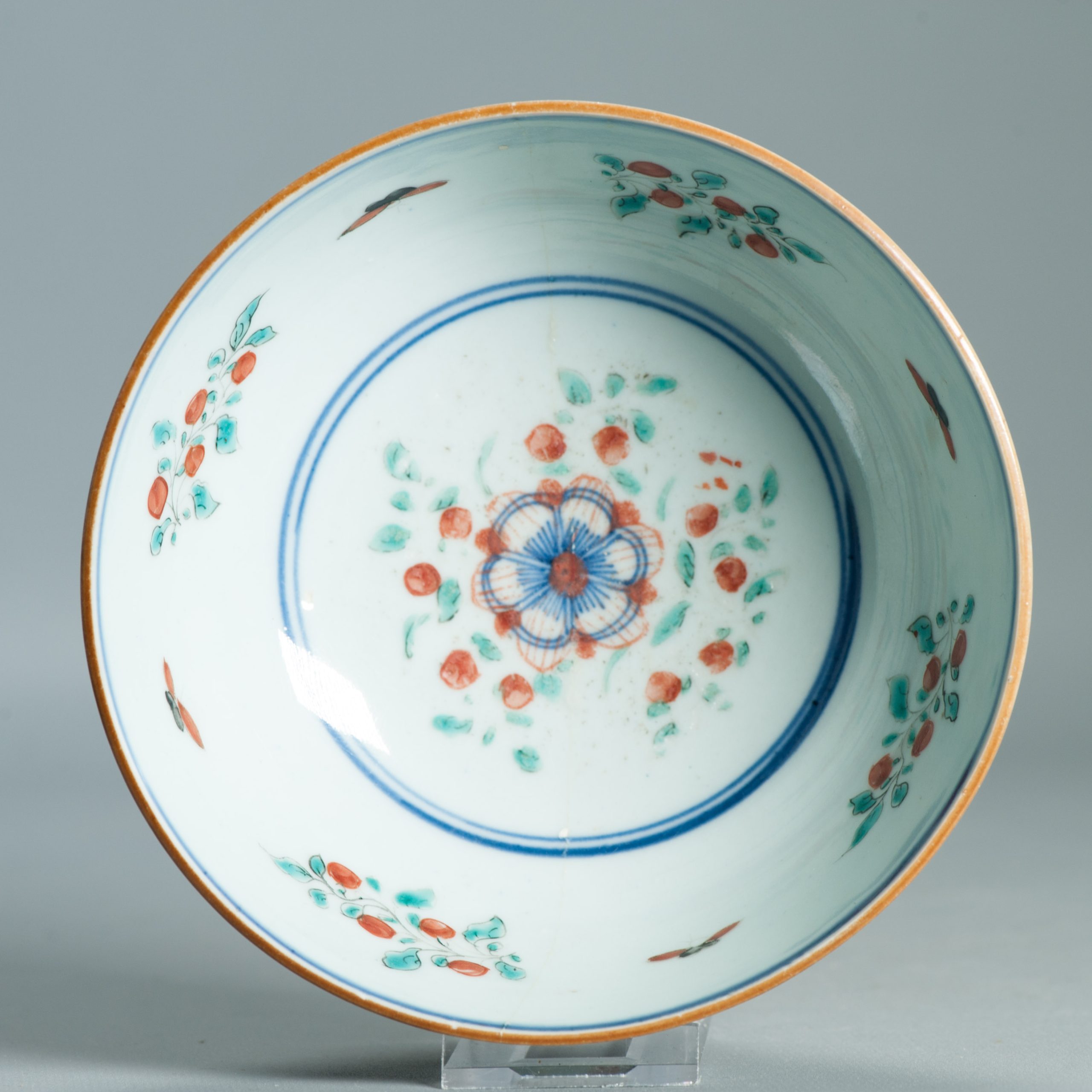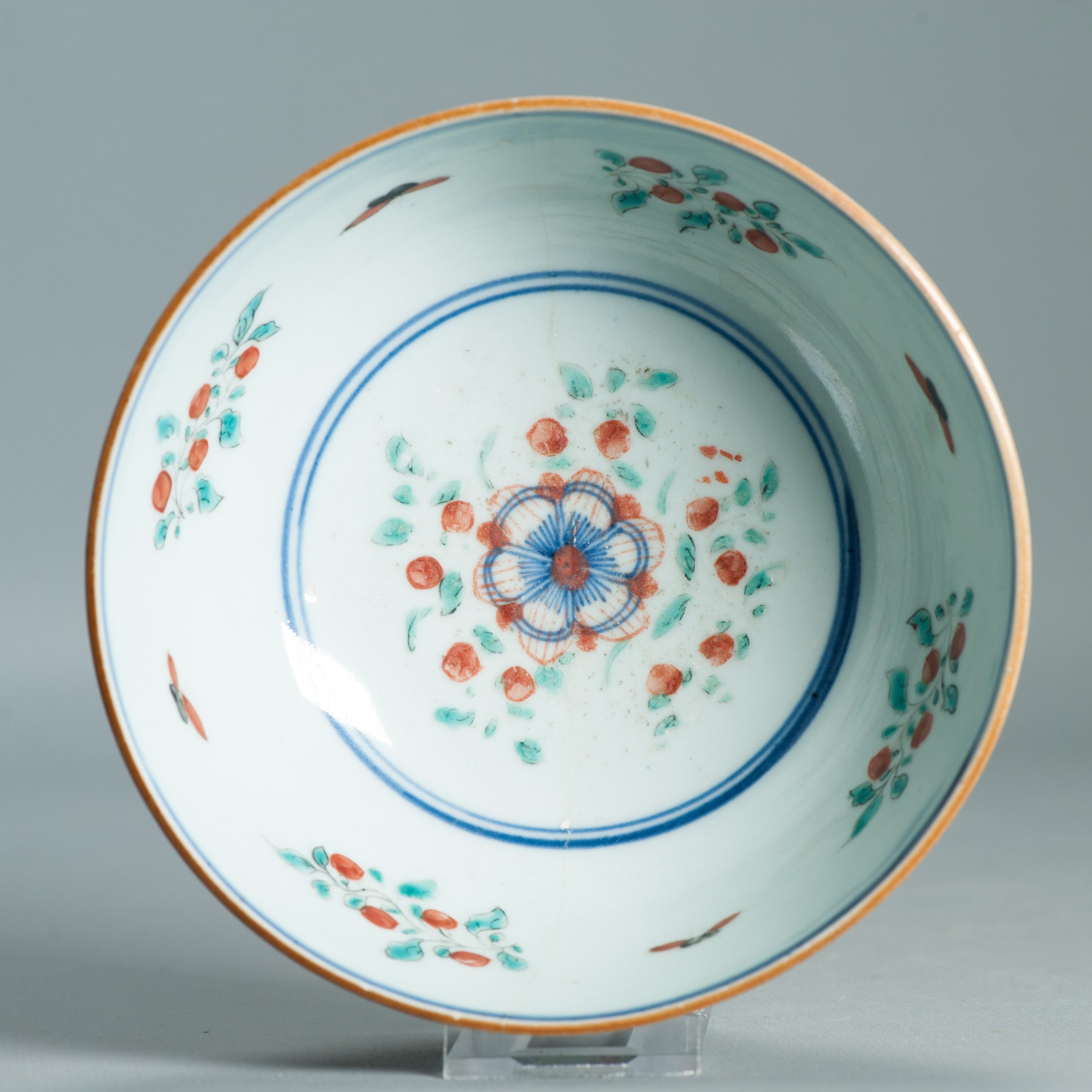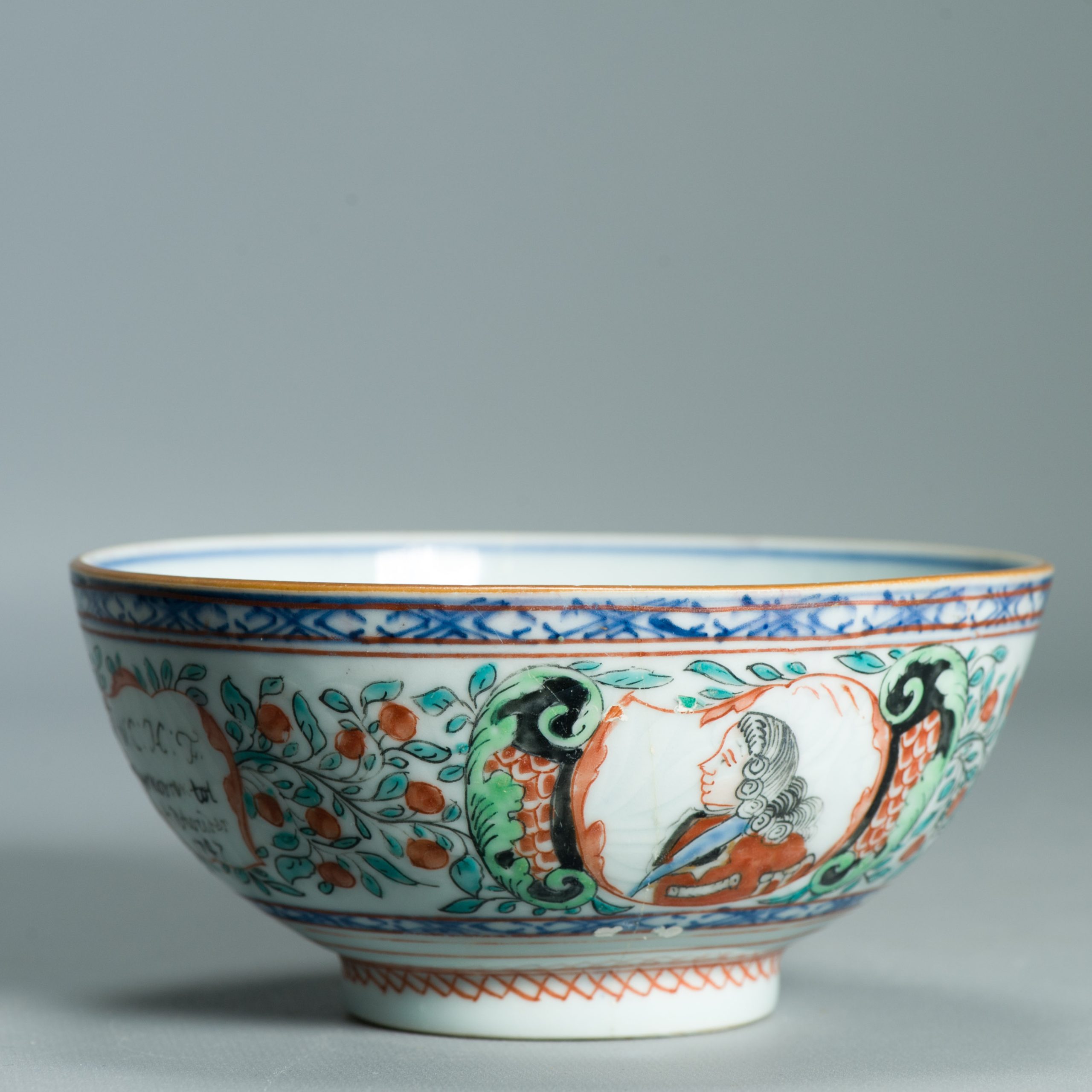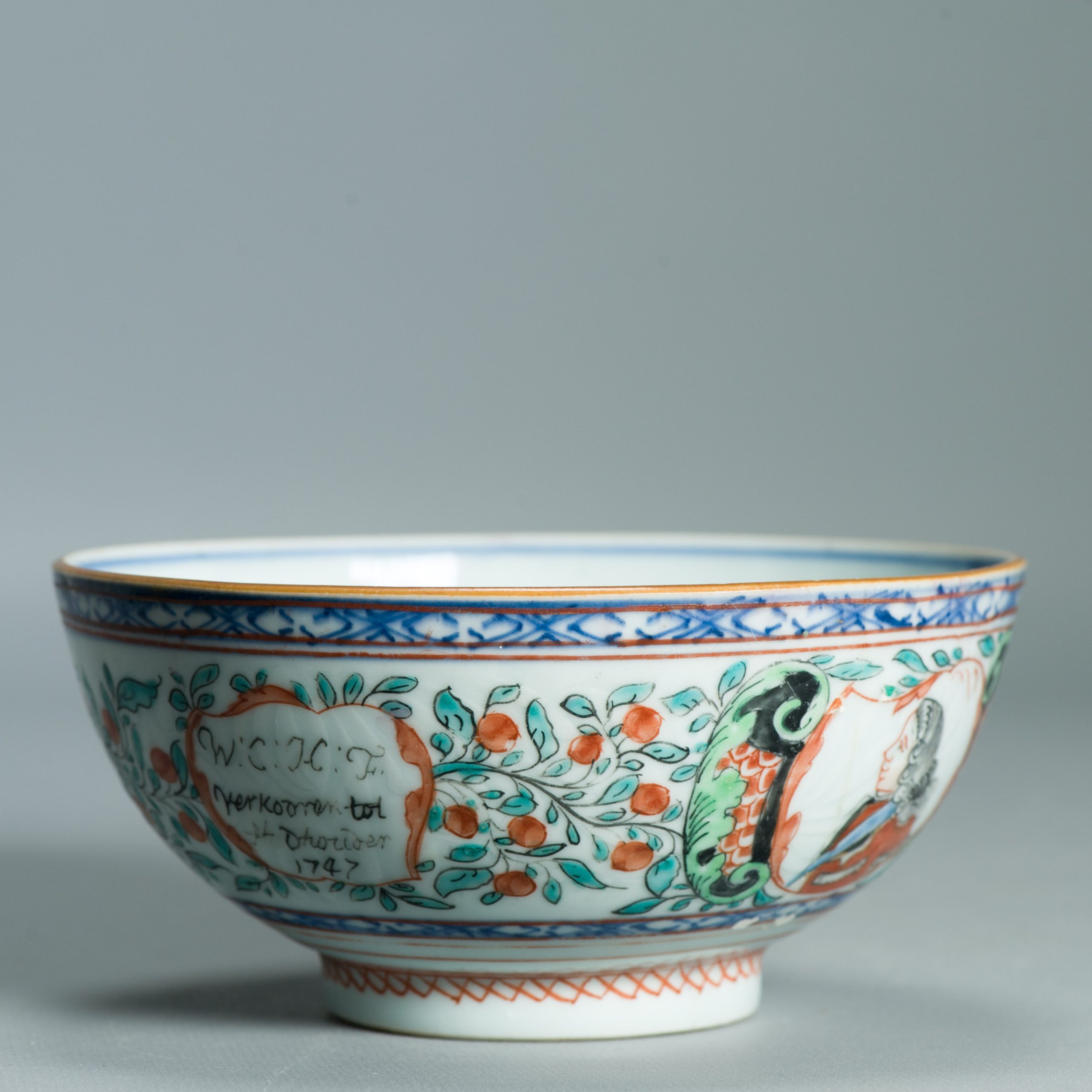1513 Antique Chinese Bowl with 1747 Redecoration of Willem IV the new Stadthouder on Amsterdam Bont
Description:
1513 Antique Chinese Bowl with 1747 Redecoration of Willem IV the new Stadthouder on Amsterdam Bont
Diameter: 145mm approx
Period:1730-1740 / 1747
Code: 110https://www.koninklijkeverzamelingen.nl/collectie/spoelkom-met-portret-van-willem-iv-7640
Provenance:
– Woolley and Wallis Asian Art II – 21 May 2025
– Helen Espir Collection
Reference:
Espir, Helen. European Decoration on Oriental Porcelain, 1700–1830. London/Lisbon: Jorge Welsh Books, 2005.Original bowl with a blue and white and anhua scrollwork. Added a decoration of Willem IV.
In 1747, Willem IV (William IV), Prince of Orange, became the hereditary Stadtholder (stadhouder) of all the provinces of the Dutch Republic — a major turning point in Dutch political history.
Here’s what happened in detail:
Before 1747: The Dutch Republic was a confederation of provinces, and not all had the same Stadtholder. The office had even been vacant in some areas during periods known as the Stadtholderless Eras.
In 1747: During the War of the Austrian Succession, French forces invaded the Austrian Netherlands and threatened the Dutch Republic. The crisis caused widespread panic and popular uprisings (Orangist riots), with citizens demanding a return to strong, centralized leadership.
April–May 1747: Willem IV, who had already been Stadtholder of Friesland, Groningen, and Drenthe, was invited by the States General to become Stadtholder of Holland, Zeeland, Utrecht, and Overijssel as well — thus uniting all provinces under one hereditary stadtholdership.
Hereditary title: His office was made hereditary in both the male and female lines, ensuring that his descendants (including the future William V and ultimately William I, King of the Netherlands) would inherit the position.
Impact: This event marked the end of the second Stadtholderless Period and paved the way for a more centralized Dutch state.
Daniël Raap
Daniël Raap (Amsterdam, 1703 – 1754) was a porcelain merchant and political activist.
He played a leading role in the Orangist revolution (1747–1751) in the Dutch Republic.
During the crisis that led to Willem IV being made hereditary Stadtholder of all provinces, Raap and other agitators published pamphlets demanding the restoration of the stadtholderate in provinces that had abolished it, and that William IV be appointed Stadtholder in all provinces, with the position made hereditary.
He also pushed for reforms that would increase popular influence: for example, he petitioned that militia captains be elected, that vacant public offices be auctioned, and that guild privileges be restored.
In 1748, Raap supported the idea of inviting the Prince (Willem IV) to come to Amsterdam to replace the city government. Willem IV indeed entered Amsterdam on 2 September 1748. However, rather than appoint radical opposition figures, the Prince selected new city officials from the Orangist faction of the city elite (i.e. among the old regent class). This disappointed Raap and led to a rupture between him and other Orangist leaders.
Over time, his moderate stance alienated both the more radical democrats and the elite Orangists; by the time of his death in 1754 he was vilified by many. His funeral was marred by riots; his coffin was destroyed.
Additional Information
| Type | |
|---|---|
| Region of origin | China |
| China dynasty period | Qing (1661 – 1912) |
| Decoration type colour | Amsterdam Bont, Imari |
| Century | 18th century |
| Size | 14cm-17cm |
| Emperor | Yongzheng (1722-1735) |
